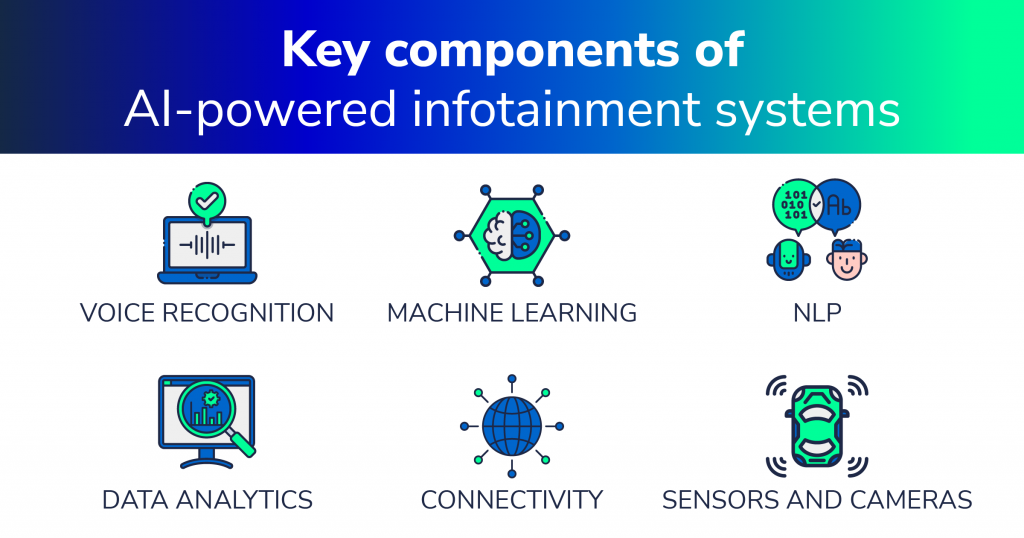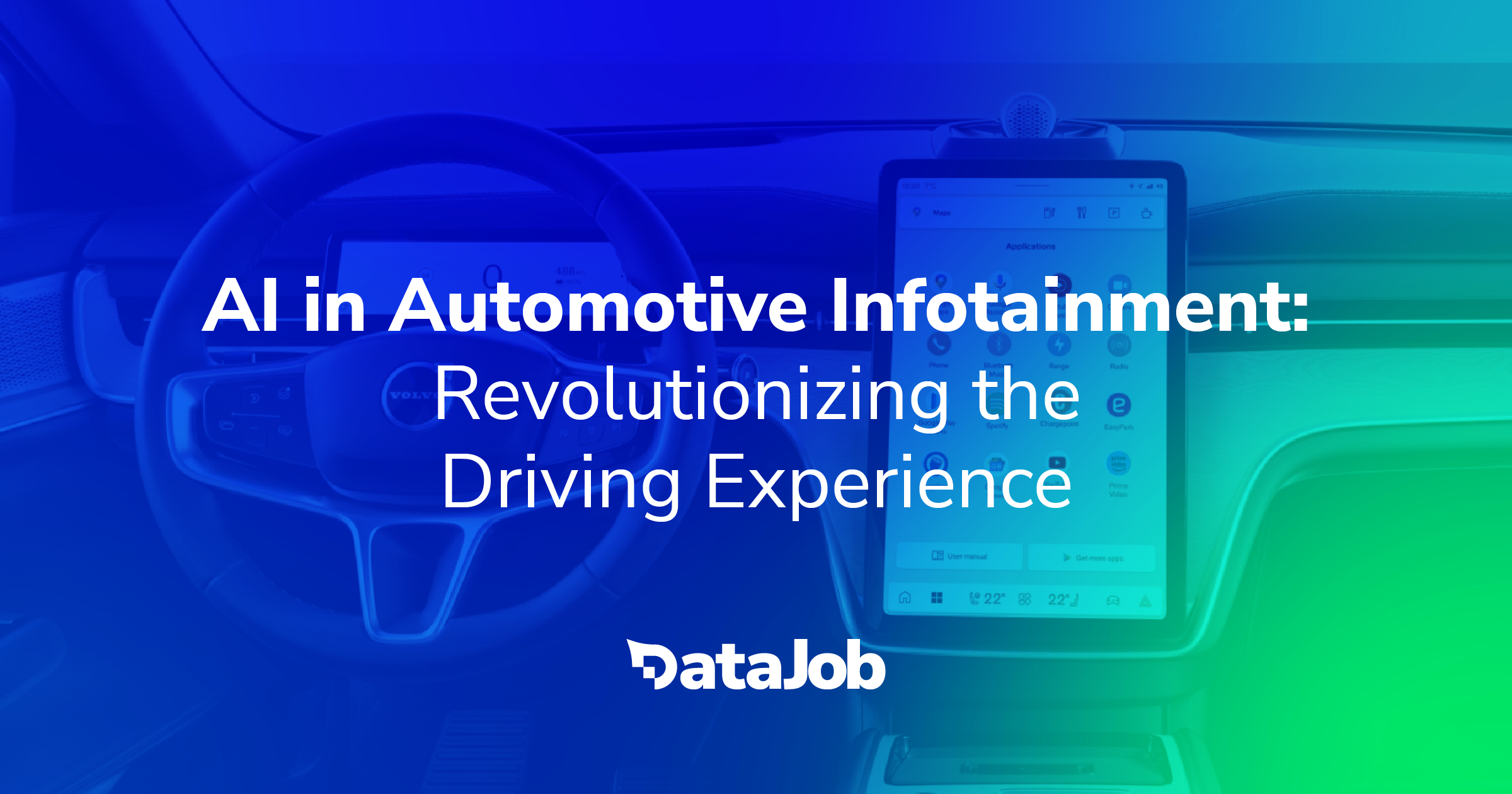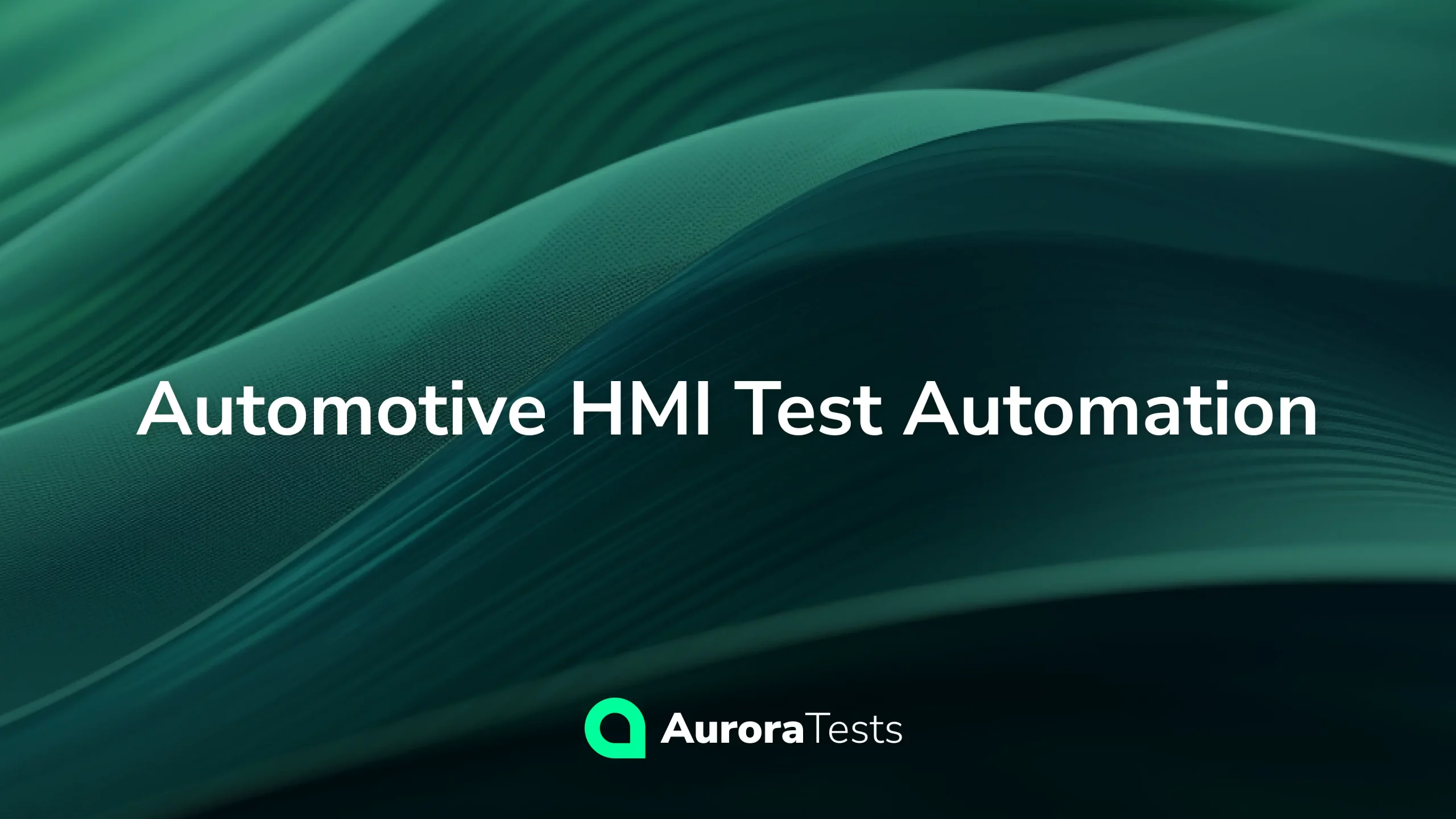Before We Begin
Imagine a journey where your vehicle effortlessly responds to your voice commands, tailoring music selections, automatically adjusting the temperature, and suggesting optimized routes. A decade ago, this may have sounded like a scene from a science fiction novel, but today, it is a reality thanks to the power of artificial intelligence (AI).
Artificial Intelligence has become an integral part of modern technology, making a remarkable impact on various industries. One sector that has been experiencing significant transformation due to AI’s advancements is the automotive industry.
With the rise of digital technology and artificial intelligence, automotive infotainment systems are evolving rapidly, becoming more intuitive, personalized, and safer. From basic car radios and CD players to today’s sophisticated, connected systems, in-vehicle infotainment has become an essential part of modern driving experiences.
In this blog post, we share real-world applications of AI in automotive infotainment and a comprehensive overview of the technology’s current and future potential. We delve into the transformative effects of AI on automotive infotainment, discussing its applications, benefits, challenges, and the exciting possibilities on the horizon.
Understanding AI in Automotive Infotainment Systems
Automotive infotainment systems refer to the in-car technology that combines entertainment, information, and communication features, enhancing the driving experience and keeping drivers and passengers informed, connected, and entertained. Over the years, these have evolved significantly, with AI integration propelling them from simple radios to today’s connected and sophisticated systems.
Key components of AI-Powered Infotainment Systems
AI-powered infotainment systems rely on several key components to deliver seamless, personalized, and efficient experiences. These components work together to enable smooth interaction between the driver and the vehicle, adapting to individual preferences and habits. Some of the key components include:

- Voice recognition: Provides hands-free interaction with the infotainment system using spoken commands. This technology minimizes distractions and enhances safety while driving. Advanced voice recognition systems, powered by AI, can understand natural language and even recognize different accents, dialects, and languages.
- Machine learning: ML algorithms enable infotainment systems to learn from drivers’ habits, preferences, and behaviors, continuously improving and personalizing the driving experience. These algorithms continuously enhance the driving experience by analyzing data such as frequently visited locations, preferred music genres, and climate control settings and adapting the system according to user habits.
- Natural language processing: NLP is an AI technology that enables computers to understand, interpret, and generate human language. In infotainment systems, NLP allows the system to understand spoken commands and respond in a way that mimics natural human conversation. This makes the interaction between the driver and the vehicle more intuitive and user-friendly.
- Data analytics: Data analytics capabilities in AI-powered infotainment systems help process large amounts of information, such as real-time traffic data, weather conditions, and user preferences, to deliver accurate and relevant information to the driver. This information can be used to optimize navigation routes, provide personalized entertainment recommendations, and adjust vehicle settings to enhance overall driving experiences.
- Connectivity: Advanced infotainment systems leverage connectivity to access various data sources and services, such as streaming platforms, navigation services, and traffic updates. AI algorithms use this data to provide personalized content, real-time traffic information, and more, enhancing the overall driving experience.
- Sensors and cameras: AI-powered infotainment systems can integrate with various sensors and cameras within the vehicle, such as driver monitoring systems, ADAS, and external cameras. These sensors and cameras provide valuable data to the infotainment system, enabling features like driver alerts, safety warnings, and seamless integration with other vehicle systems.
Real-World Applications of AI in Automotive Infotainment
Voice recognition and virtual assistants
- Hands-free communication and control: AI-powered voice recognition systems enable drivers to control various in-car functions like climate control, navigation, and entertainment without taking their hands off the wheel. This helps minimize distractions and maintain a higher level of safety while driving. Virtual assistants, such as Apple’s Siri, Google Assistant, and Amazon’s Alexa, are increasingly integrated into infotainment systems, enabling seamless communication and control between the driver and the vehicle.
- Personalized driver preferences: Virtual assistants learn from drivers’ habits and preferences, delivering a personalized driving experience. AI algorithms can analyze a driver’s voice commands, favorite music, and frequent destinations to tailor the infotainment experience according to their needs and desires. Some AI-based virtual assistants can remember a driver’s preferred seat and mirror positions, automatically adjusting them when the driver enters the vehicle.
Personalized entertainment and content
- AI-curated playlists and recommendations: AI algorithms can analyze drivers’ music preferences and listening habits to create personalized playlists and recommend new songs, albums, or artists. For example, Spotify’s “Your Daily Drive” playlist uses AI to combine news, podcasts, and music tailored to each user’s taste. This ensures that the in-car entertainment experience remains fresh and engaging, keeping drivers entertained throughout their journey.
- In-car streaming services and content: AI-powered infotainment systems can integrate with various streaming services, such as Spotify, Apple Music, and Netflix, allowing drivers and passengers to access their favorite music, podcasts, and video content on the go. This week Volvo has announced that Prime Video and YouTube are now available in their cars.
Advanced Navigation Systems
- Real-time traffic data and route optimization: AI-powered navigation systems like Waze and Google Maps use real-time traffic data to provide the most efficient routes, avoiding traffic jams and minimizing travel time. These systems can also predict traffic patterns and suggest alternative routes before congestion occurs, ensuring a smoother driving experience.
- Predictive destination suggestions: AI algorithms can analyze a driver’s past destinations, calendar events, and travel habits to predict where they might be going and automatically suggest the best route. Tesla’s navigation system uses machine learning to analyze the driver’s daily routine and provide proactive route suggestions based on their habits, saving time and helping drivers stay focused on the road.
Safety Features and Driver Assistance
- Driver monitoring and alert systems: AI-powered driver monitoring systems use cameras and sensors to detect signs of driver fatigue, distraction, or impairment. If the system detects any concerning behavior, it can issue alerts or even take corrective action, such as adjusting the vehicle’s speed or activating the brakes, to prevent accidents.
- Integration with Advanced Driver Assistance Systems (ADAS): AI-powered infotainment systems can work in tandem with ADAS, providing real-time information about the vehicle’s surroundings and assisting the driver in maintaining a safe distance from other vehicles, staying within lane markings, and avoiding potential hazards. Features like adaptive cruise control, lane departure warning, and parking assistance are powered by AI algorithms that process data from multiple sensors, such as cameras, radars, and LiDAR. For example, Volvo’s Sensus Connect system integrates with the vehicle’s ADAS to display information about speed limits, blind-spot warnings, and collision avoidance alerts on the infotainment screen. This integration can significantly improve overall vehicle safety and driver awareness.
- Traffic sign recognition: AI-driven traffic sign recognition systems interpret speed limits, no-passing zones, and other road signs, displaying the information on the instrument cluster or head-up display. This helps drivers stay informed and adhere to traffic regulations, ultimately improving road safety.
Challenges and Ethical Considerations in Automotive AI
Data privacy and security concerns
- Collection of personal information: AI-powered infotainment systems collect vast amounts of data about drivers’ habits, preferences, and behaviors. This raises concerns about data privacy, as sensitive information could be misused or fall into the wrong hands. Companies developing and deploying AI-infused infotainment systems must ensure that they adhere to strict data protection regulations and implement robust security measures to safeguard users’ privacy.
- Vehicle hacking and cybersecurity: As infotainment systems become more connected and sophisticated, the risk of cyberattacks increases. Hackers could potentially gain unauthorized access to a vehicle’s systems, compromising the safety and privacy of its occupants. Automakers and technology providers must continuously invest in cybersecurity measures and stay up-to-date with the latest threats to ensure the security of their systems.
Ensuring responsible AI development and implementation
As AI technologies become increasingly integrated into automotive infotainment systems, it is crucial to ensure that these systems are developed and implemented responsibly. This includes addressing potential biases in AI algorithms, ensuring transparency in AI decision-making processes, and being accountable for any unintended consequences that may arise from the use of AI in infotainment systems. Automakers and technology providers must work together to establish ethical guidelines and best practices for the development and deployment of AI-powered infotainment systems to ensure that they enhance the driving experience without compromising safety, privacy, or fairness.
The Future of AI in Automotive Infotainment Systems
Integration with autonomous driving technology
As the automotive industry moves toward fully autonomous vehicles, AI-powered infotainment systems will play an increasingly important role in providing an engaging and comfortable in-car experience. With drivers no longer needing to focus on the road, infotainment systems will become the central hub for in-car entertainment, communication, and productivity. AI will continue to enhance these systems, offering more personalized and immersive experiences for passengers.
Enhanced vehicle-to-everything (V2X) communication
Future AI-powered infotainment systems will be an integral part of vehicle-to-everything (V2X) communication, enabling seamless data exchange between vehicles, infrastructure, and other devices. This technology will allow infotainment systems to provide drivers with real-time information about traffic, weather, and road conditions, as well as enable communication between vehicles to improve safety and efficiency on the road.
Evolving user interfaces and innovative features
As AI technology continues to advance, we can expect to see more innovative user interfaces in infotainment systems, such as augmented reality displays, gesture controls, and even brain-computer interfaces. These cutting-edge technologies will enable even more intuitive and natural interactions between drivers and their vehicles, further enhancing the driving experience.
Final Thoughts
AI has already revolutionized the automotive infotainment landscape, changing how we interact with our vehicles and enriching the driving experience. By harnessing the power of AI, infotainment systems offer more intuitive, safer, personalized, and entertaining experiences, delivering real-world benefits to drivers and passengers. AI can analyze vast amounts of data in real-time, providing drivers with accurate information and recommendations, while also allowing for hands-free control of various in-car functions, reducing distractions and improving overall safety.
While challenges and ethical considerations must be addressed, the future of AI in automotive infotainment systems holds immense potential for further innovation and advancement. We can expect AI to play an increasingly important role in the development of autonomous driving technology, V2X communication, and cutting-edge user interfaces. By embracing responsible AI implementation, the automotive industry can continue to enhance the driving experience and make our time on the road safer, more efficient, and more enjoyable.
Explore More with DataJob
As AI continues to redefine the automotive landscape, aligning with the right partner can make all the difference. DataJob’s dedicated AI/ML solutions team enables you to integrate machine learning models for real-time data analysis, predictive maintenance, and personalization, to enhance infotainment experiences.
Our Automotive solutions further elevate your innovations, ensuring safe, scalable, and intuitive systems that keep you competitive in this rapidly evolving market.
Contact us and turn cutting-edge AI concepts into tangible automotive breakthroughs.




